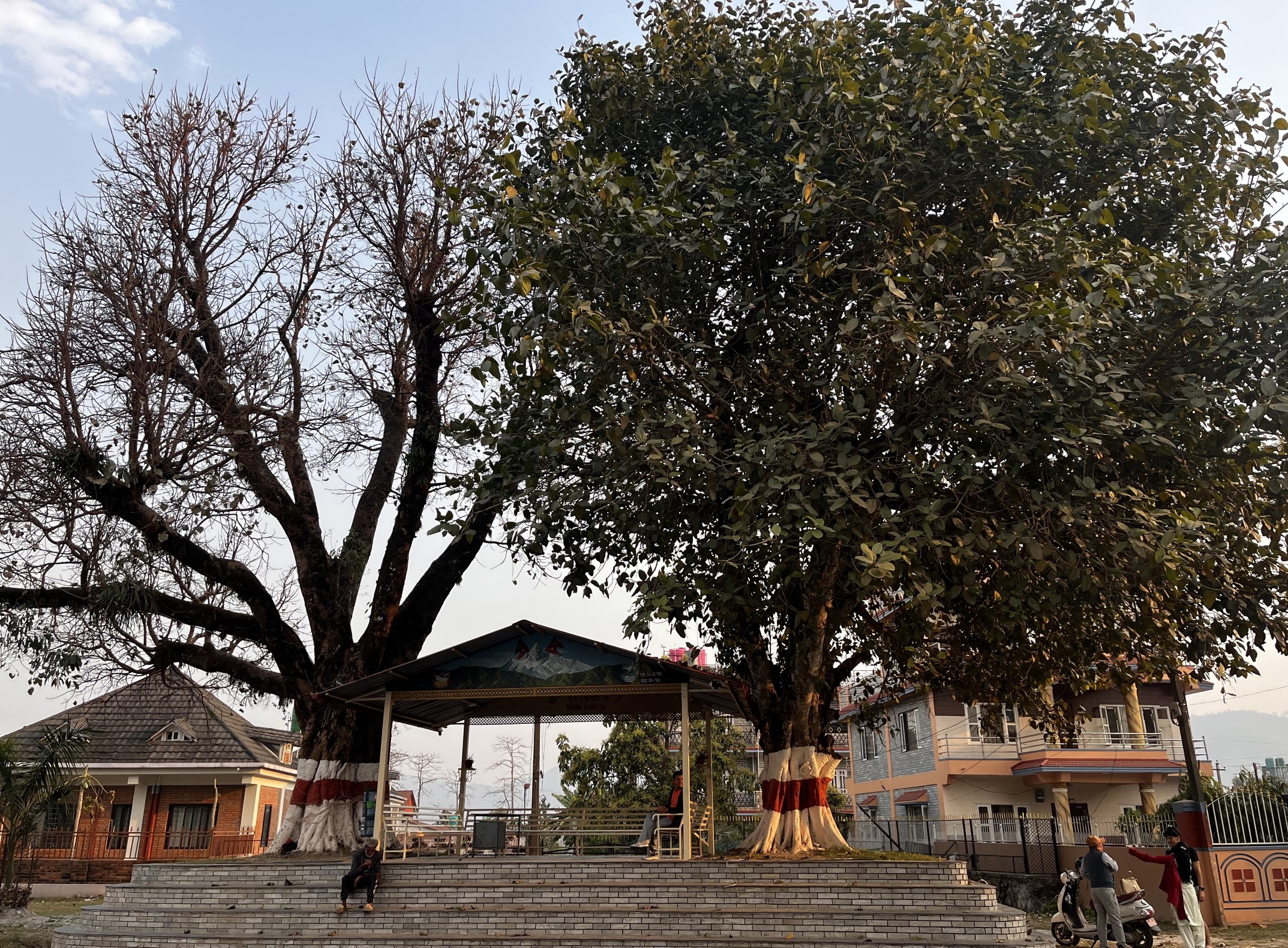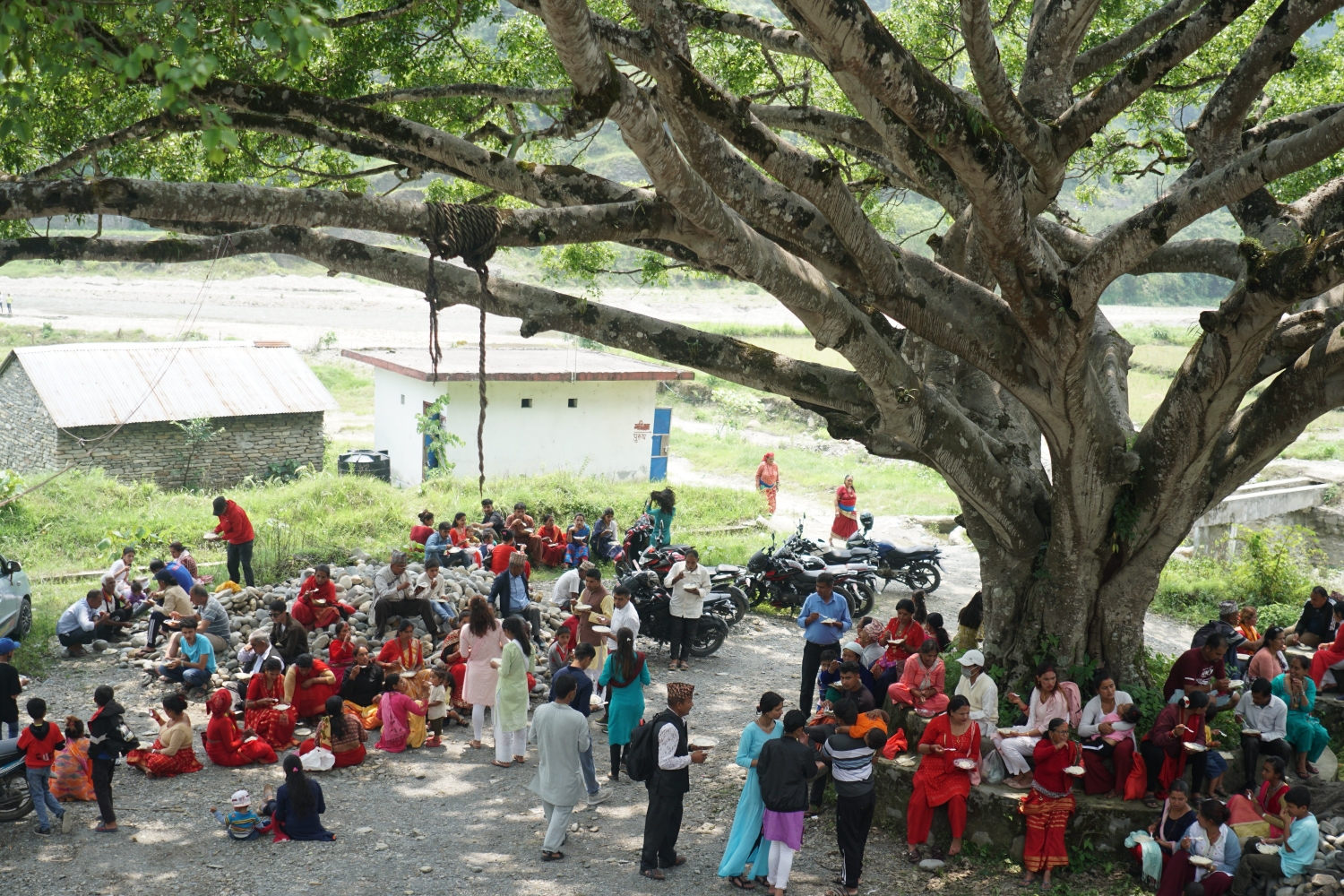Trees of life and living
Pokhara also losing its traditional communal spaces to haphazard urbanisationचौतारा rest stops have long been an integral part of scenic touristic town of Pokhara but are now rarely seen as the city bursts at the seams.
They say inhabitants of Pokhara saw a plane before they saw cars. Indeed, the grass airfield was built in the 1950s, while the Kathmandu highway 20 years later.
Before roads, people walked to get around, pausing to rest or even nap under the shade of banyan-pipal trees.
Pokhara airport’s ‘terminal’ in those days was a shady chautara where passengers waited for their flights.
The chautara bore silent witness to daily life, whether it was travellers seeking a brief respite from the summer heat or villagers gathering for a chat in the mornings and evenings.
But with the roads came vehicles, and then houses started filling up spaces, even farmlands. Pokhara began transforming from a serene village to a bustling city.

The banyan-pipal trees were chopped down to make way for wider intersections and buildings. The once-iconic rest stops that carried Pokhara’s identity had all but vanished.
“Building chautara was once considered a religious duty, which is why so many of them were constructed across Pokhara,” says archivist Sunil Ulak.
Ekai Kawaguchi, a Japanese Buddhist monk, who visited Nepal 120 years ago en route to Tibet, documented the landscape of Pokhara and its surroundings. In his book, Three Years in Tibet, he reflects on the natural beauty of the town and its shady trees.
A chautara used to be surrounded by ponds, where shepherds would bring their cattle to drink from while they took a nap under the shade. The gentle rustling of leaves in the cool breeze lent a soothing melody as did the chirping of birds, while the insects took refuge in the branches and leaves.
Read also: Pokhara 800 years ago, Kunda Dixit
This ‘nature’s breeze’, as botanist Kalyan Panta puts it, is now history due to haphazard urbanisation. “When the wind strikes against one leaf, it creates a domino effect and other leaves start waving as well,” he explains.
There were 632 chautara in the city until 1977, and by 2000 the number had fallen to 278. But in some wards the number of trees fell from 55 in 1984 to only five now.
The gradual loss of these resting places has meant habitat destruction of birds and insects, it has also damaged the environment and natural beauty of the city.
Researcher Jagannath Adhikari’s study showed that infrastructure projects ignored the environment, and concluded that that urbanisation in Pokhara was unsustainable.
The destruction continues to this day. Recently, old chaurata in wards 6, 13 and 14 were cleared to make way for a sacrificial ritual. In fact, ward 6 got a permit from the local government to clear its remaining trees.

But in wards 13 and 14, the Human Service Foundation cut down some 33 trees for which it is in a dispute with the metropolitan city as there is no unclear jurisdiction regarding who gives the permit. The Kaski Division Forest Office is currently investigating the matter.
Elsewhere in ward 19, the ward office had launched ‘मेरो रूख, म काट्छु’ campaign due to an alleged chaos caused by monkeys in the area. The decision was rescinded after an all-around opposition.
To be sure, there are policies in place to protect trees such as the Gandaki Province Forestry Act, 2080, and the Regulations, 2081. The province government also introduced an act in 2019 per which no tree, including pipal, silk cotton and other trees of natural and historical importance shall be damaged, eroded or removed. But the local government, responsible for implementing the Act, is doing the opposite.
“If this rapid rate of tree felling continues, neither trees nor chautara will survive for the future generation,” conservationist Ram Bahadur Poudel tells us, adding that old trees are being cleared under the pretext of pruning branches.
Interestingly, Ulak notes that Pokhara-8 was called सिमलचौर in the past because there were so many majestic silk cotton trees, but there are very few left, if any, and hence altering the identity of a place.
With modernisation, people have questioned the significance of chautara in this day and age. But they still have relevance. Urban centres in Pokhara and Kathmandu are much hotter than the outskirts because of the urban heat island effect.
Says archivist Ulak: “While their original purpose was to provide rest, today they continue to play a crucial role in regulating temperature, beautifying the city, and preserving our environment.”




